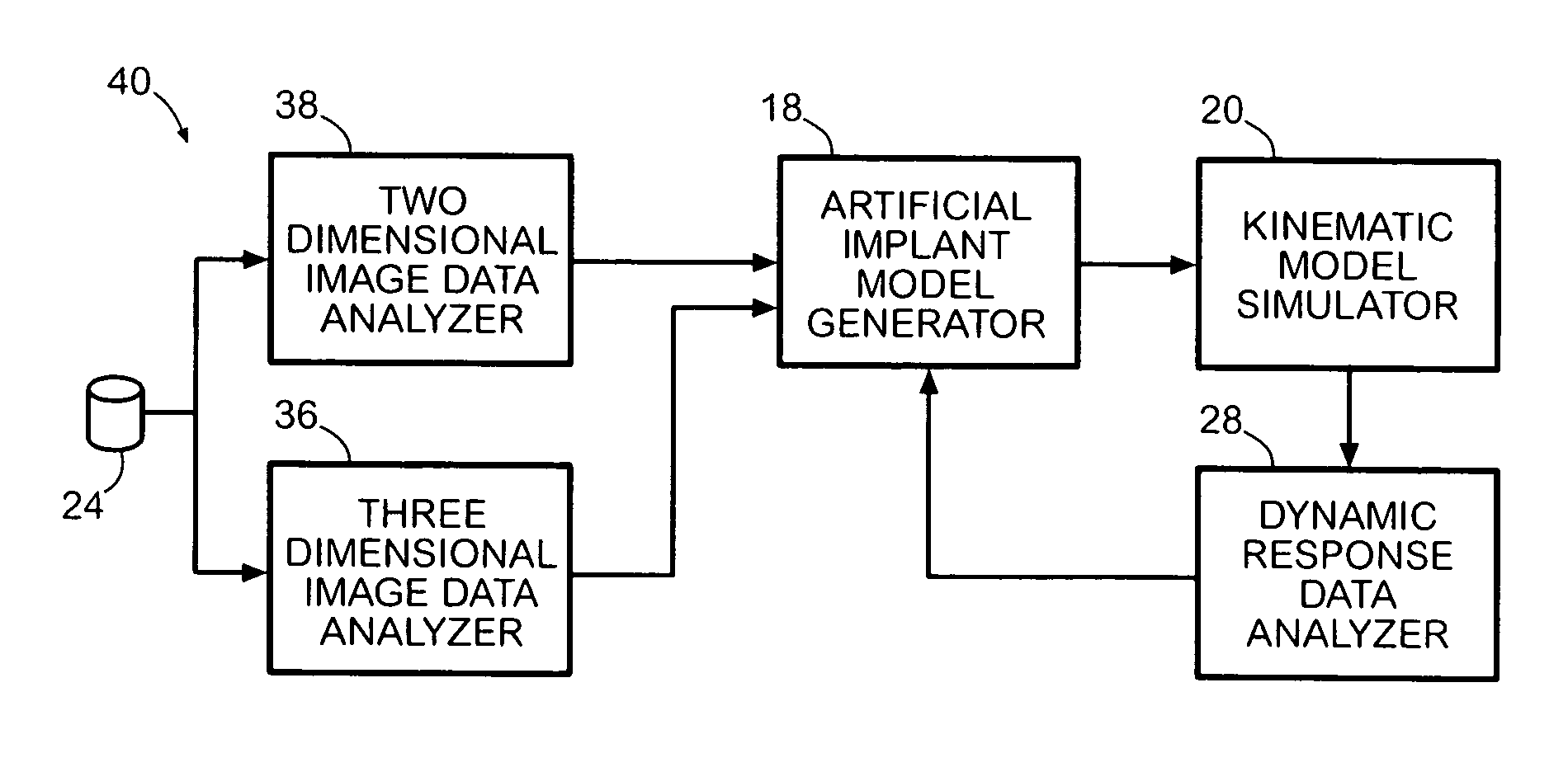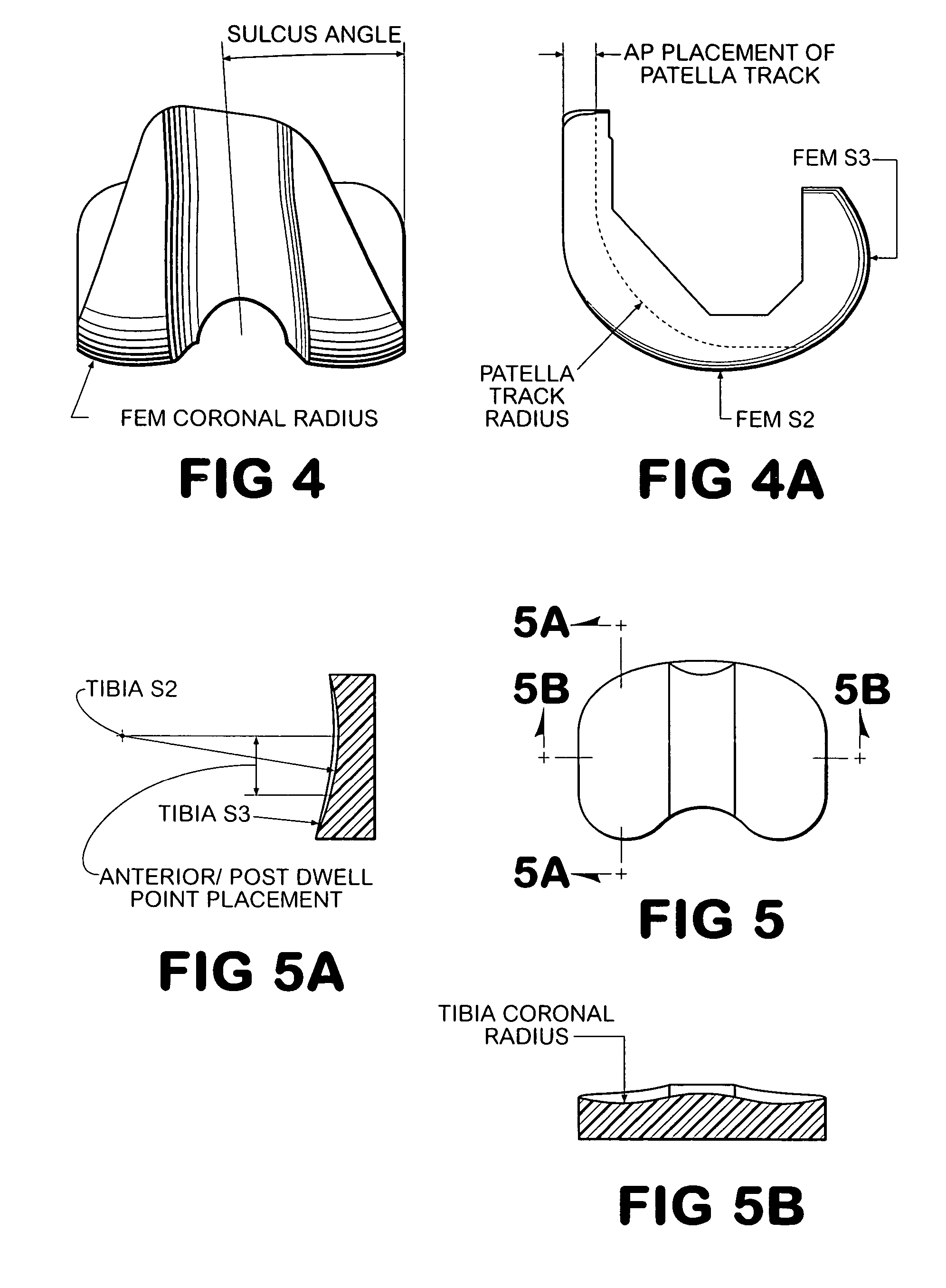System and method for designing a physiometric implant system
a technology of physiometric implants and design systems, applied in the field of implant design systems, can solve the problems of increasing the cost of fabrication, deteriorating one or more joint compartments, and affecting the quality of life of the implant, and achieve the effect of reducing the conditional parameter
- Summary
- Abstract
- Description
- Claims
- Application Information
AI Technical Summary
Benefits of technology
Problems solved by technology
Method used
Image
Examples
Embodiment Construction
[0039]A system 10 for generating model data to fabricate an artificial implant component for a joint reconstruction is shown in FIG. 1. The system 10 includes an anthropometric data analyzer 14, an artificial implant model generator 18, and a kinematic model simulator 24. The anthropometric data analyzer 14 receives static image data, such as CT data, from a database 24. Preferably, the anthropometric data analyzer 14 performs a frequency distribution analysis on the static image data to generate one or more groupings of geometric dimensions and dimensional measurement ranges that are provided to artificial implant model generator 18. Preferably, artificial implant model generator 18 uses at least one grouping of geometric dimensions and measurement ranges to generate an implant model data set that may be used to fabricate a solid model of an artificial implant.
[0040]The kinematic model simulator 20 of the system 10 is a computer program that simulates a joint in dynamic motion. The...
PUM
 Login to View More
Login to View More Abstract
Description
Claims
Application Information
 Login to View More
Login to View More - R&D
- Intellectual Property
- Life Sciences
- Materials
- Tech Scout
- Unparalleled Data Quality
- Higher Quality Content
- 60% Fewer Hallucinations
Browse by: Latest US Patents, China's latest patents, Technical Efficacy Thesaurus, Application Domain, Technology Topic, Popular Technical Reports.
© 2025 PatSnap. All rights reserved.Legal|Privacy policy|Modern Slavery Act Transparency Statement|Sitemap|About US| Contact US: help@patsnap.com



